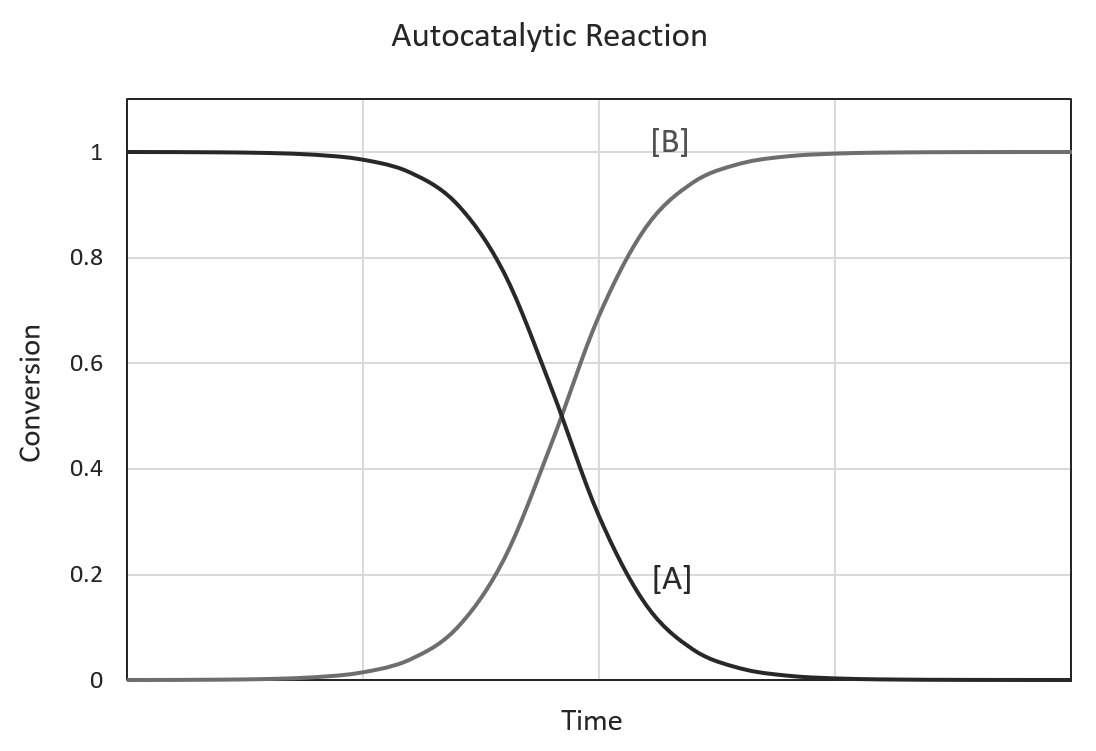Introduction
In the realm of decision-making, the mental model of Autocatalysis unveils the powerful dynamics of self-reinforcing feedback loops that can shape our choices and behaviors. Anchored in human psychology, Autocatalysis plays a crucial role in our day-to-day lives, influencing the trajectory of our decisions. By comprehending this mental model, we can recognize its prevalence and understand how it can lead to irrational decision-making contrary to our best interests.
Defining Autocatalysis and Its Relevance in Decision-Making
Autocatalysis refers to a self-reinforcing process in which a particular action or behavior stimulates further similar actions, creating a feedback loop that amplifies its own occurrence. In decision-making, Autocatalysis is relevant because it can lead us down a path where our choices become increasingly aligned with our initial actions, regardless of their effectiveness or long-term consequences.
Autocatalytic processes often emerge due to the psychological phenomenon known as cognitive consistency. Individuals have a natural inclination to seek coherence and consistency between their beliefs, attitudes, and actions. Once a behavior or decision is initiated, Autocatalysis kicks in, reinforcing and solidifying that choice, even if it may not be the most rational or beneficial option.
Examples of Autocatalysis in Various Contexts
- Personal Life Decisions: Consider an individual who starts a new exercise routine. Initially, the decision to exercise is based on a desire to improve health and well-being. However, as the individual experiences the positive effects of exercise, such as increased energy and improved mood, Autocatalysis takes hold. The individual becomes increasingly motivated to continue exercising, leading to more frequent and intense workouts, potentially to the point of obsession or overexertion, despite potential negative consequences on other aspects of their life.
- Business Scenarios: Autocatalysis can influence decision-making in business environments. For instance, a company may choose to invest heavily in a specific marketing strategy or product line based on early positive results. As the investment continues, Autocatalysis reinforces the decision, amplifying the company’s commitment, resources, and efforts. However, the company may overlook market changes, customer preferences, or potential risks associated with overreliance on a single strategy, leading to a narrow focus and missed opportunities for innovation and growth.
- Public Policy-Making: In the realm of public policy-making, Autocatalysis can contribute to the entrenchment of certain policies or ideologies. When a particular policy is implemented, initial positive outcomes or political support can trigger Autocatalysis. As stakeholders witness the reinforcing effects, they become more inclined to maintain or expand the policy, even if it may have unintended consequences or fails to address evolving societal needs. This can perpetuate outdated or ineffective policies, hindering progress and adaptability.
Mental Biases and Psychological Underpinnings
Autocatalysis is closely intertwined with several cognitive biases and psychological underpinnings that contribute to its prevalence. Confirmation bias plays a significant role, as individuals tend to seek and interpret information that confirms their existing beliefs or actions, reinforcing the Autocatalytic loop. Anchoring bias can also come into play, as the initial decision or action becomes the reference point against which subsequent choices are evaluated, leading to a biased perception of the overall effectiveness.
Additionally, the sunk cost fallacy can contribute to Autocatalysis. Once resources, time, or effort have been invested in a particular course of action, individuals may feel compelled to continue down that path, even if it no longer aligns with their best interests. This perpetuates the Autocatalytic loop, as sunk costs become an influential factor in decision-making.
Identifying and Mitigating Autocatalysis
To avoid succumbing to Autocatalysis and making irrational decisions, it is essential to develop awareness and employ strategies to mitigate its effects. Here are practical tips for recognizing and avoiding this mental trap:
- Challenge Assumptions and Beliefs: Actively question your beliefs and assumptions, seeking diverse perspectives and evidence that challenge your initial choices. Be open to reevaluating your decisions and adjusting your course of action based on new information or changing circumstances.
- Encourage Critical Thinking: Foster a culture of critical thinking and constructive skepticism. Encourage others, including team members or stakeholders, to question and challenge the prevailing narrative, fostering a more balanced and objective decision-making process.
- Seek Feedback and Alternative Perspectives: Actively seek feedback from trusted individuals who offer different viewpoints. Engage in conversations and debates that expose you to a diverse range of perspectives, helping you break free from the echo chamber of self-reinforcing feedback loops.
- Embrace Experimentation and Adaptability: Adopt an experimental mindset, embracing a willingness to try new approaches and learn from both successes and failures. Encourage adaptability and flexibility in your decision-making processes to avoid becoming overly attached to a specific course of action.
Conclusion
Autocatalysis, as a mental model, sheds light on the powerful feedback loops that can shape our decisions and behaviors. By understanding its dynamics, we can recognize when we are falling into self-reinforcing patterns that may lead to irrational choices. Through awareness and the application of strategies such as challenging assumptions, seeking alternative perspectives, and fostering adaptability, we can avoid the pitfalls of Autocatalysis and make more informed decisions aligned with our long-term interests.
